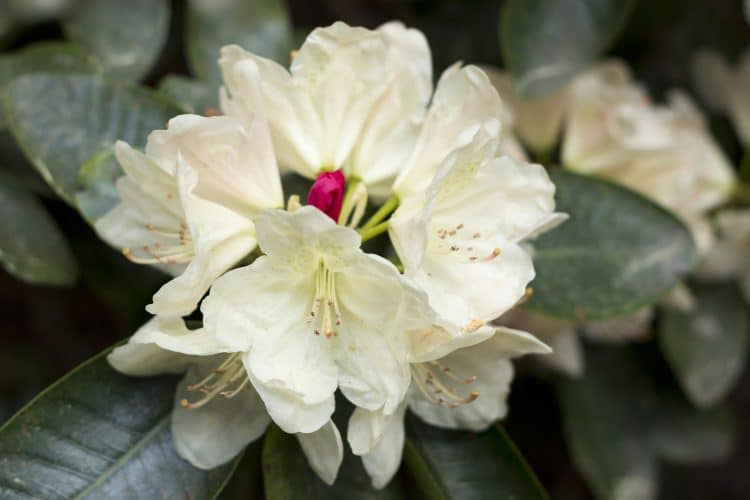The essential oil of Rhododendron anthopogonoides (a medicinal species of Rhododendron native to China) has been found to have significant anti-microbial properties against Bacillus subtilis and Myobacterium tuberculosis. [1] The oil produces anti-proliferative effects on cervix human adenocarcinoma tissue and has displayed anti-inflammatory properties at high concentrations. [1] As research explores cannabinoid-like chemicals sourced from botanicals beyond Cannabis sativa L., the chemical composition of R. anthopogonoides extract has been drawing attention. In previous studies, four cannabinoid-like chromane and chromene derivatives had been isolated from R. anthopogonoides. [2] Progressing in their research for anti-allergy botanical compounds, Iwata and Kitanaka [3] explored the isolation, stereochemistry determination, and anti-allergic properties of cannabinoid-like chromane and chromene derivatives and related compounds extracted from leaves and sticks from the R. anthopogonoides plant.
Research Rhododendron Anthopogonoides
This study was executed by fractionating the n-hexane layer of the prepared ethanol extract of R. anthopogonoides by using reverse phase chromatography and high performance liquid chromatography. Included in the isolated compounds were cannabicyclol (CBL)-type compound anthopogocyclolic acid, a colorless powder, and cannabichromene (CBC)-type compound anthopogochromenic acid, a brown oil. Other isolated compounds included CBC-type compounds cannabiorcichromenic acid and cannabiorcicyclolic acid, which had not yet previously been isolated from R. anthopogonoides. Also isolated were three additional synthetic cannabinoid analogues and geranyl orsellinic acid, all of which had not yet been isolated from any natural source. Iwata and Kitanaka suggest that the absolute configuration of the isolated compounds (excluding geranyl orsellinic acid) and the cannabinoids are identical. They attribute this to the similar biosynthesis, specifically the cyclization of CBC and the related enzyme activity responsible for the derivations of the molecule’s isoprenyl side chain. [3]
The effects of anthopogochromenic acid and two of the isolated synthetic analogues on the compound 48/80-induced histamine release from peritoneal mast cells in rats were reported to be comparable to that of indomethacin, a prescription NSAID used to treat arthritis. Iwata and Kitanaka [3] explain the factors that contribute to the anti-allergic properties, “These findings suggest that the length of a chromene-connected isoprenyl side chain is important for the potency of inhibition of histamine release. Moreover, the increase of aqueous due to the combination of a carboxy group or a hydroxy group with the geranyl chain of chromene derivatives is expected to have an impact on the potency of the inhibitory effect on histamine release.” The explained factors provide a foundation to further research additional potential medicinal benefits of R. anthopogonoides as it has been shown to be a natural source for anti-allergy agents. [3]
Citations
- Innocenti G, Dall’Acqua S, Scialino G, et al. Chemical composition and biological properties of Rhododendron anthopogon essential oil. Molecules. 2010;15(4):2326-2338. Published 2010 Mar 31. doi: 10.3390/molecules15042326. [Impact Factor: 3.267; Times Cited: 32]
- Iwata N, Kitanaka S. Tetracyclic chromane derivatives from Rhododendron anthopogonoides. J Nat Prod. 2010;73(7):1203-1206. doi:10.1021/np900543r. [Impact Factor: 3.779; Times Cited: 29]
- Iwata N, Kitanaka S. New cannabinoid-like chromane and chromene derivatives from Rhododendron anthopogonoides. Chem Pharm Bull (Tokyo). 2011;59(11):1409-1412. doi:10.1248/cpb.59.1409. [Impact Factor: 1.416; Times Cited: 17]











